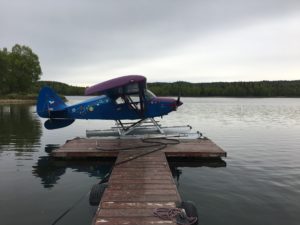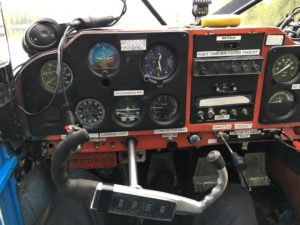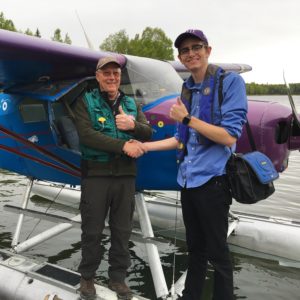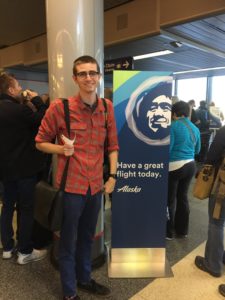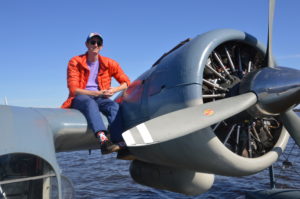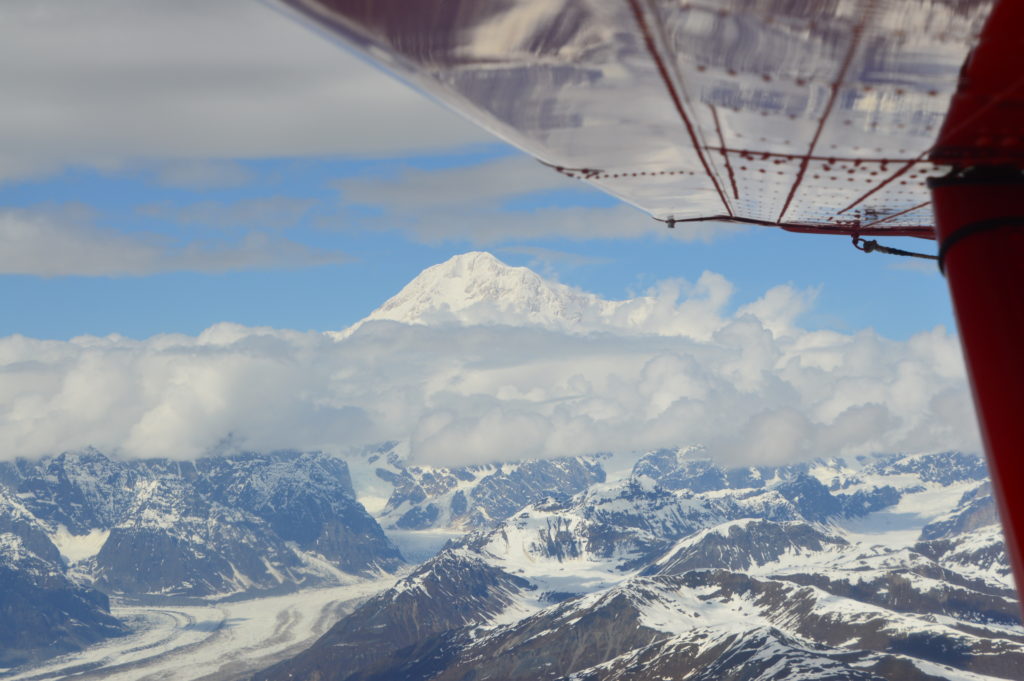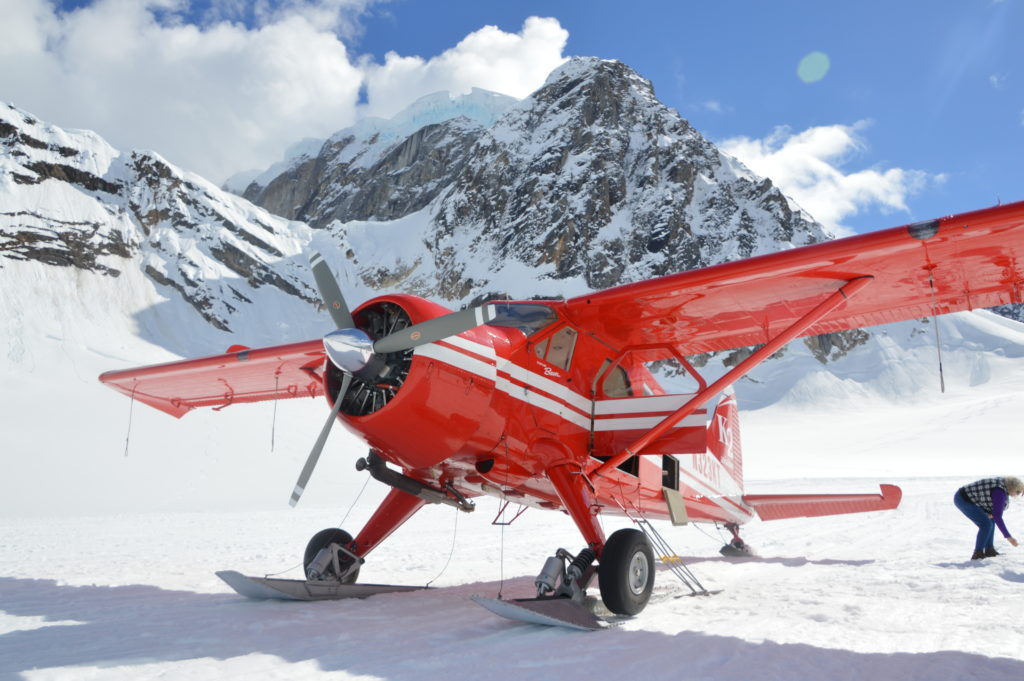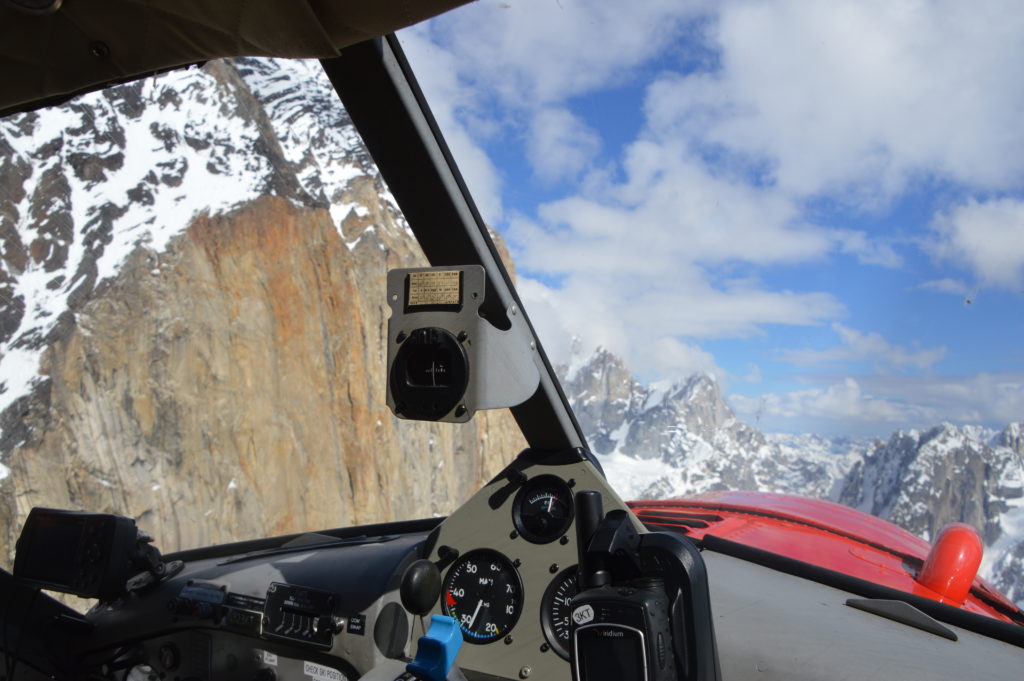Another two weeks have passed up here in the Final Frontier, and my excitement and amazement of and for this incredible state has only increased. One of my goals for the summer was to get my commercial certificate for single engine sea aircraft, so I figured there was no better time to start it than right away. After some research of local flight schools I settled on flying with Alaska Floats and Skis, gave them a call and scheduled a lesson.
On day one I was greeted by the most interestingly painted aircraft I had ever seen, aptly named “Flower Power.” A Piper Tri-Pacer on EDO 2000 floats, you might think it was a step down from the Goose I had flown a week prior, but as someone new to the world of floats I was excited to get my hands on anything.
I met my instructor, we did a brief ground school session before walking down to the dock, starting the plane and taxiing away. Within minutes of takeoff I was introduced to Alaskan flying in the best possible way. As I set myself up at 1,000 feet I heard my instructor say, “This is too high, take me to 20 feet and follow the river.”
Over the next three days, 4.1 hours in the plane, and many more hours studying at home, I learned everything I needed to know about operating a seaplane. We worked on different kinds of taxiing (idle taxi, plow taxi, step taxi) and what makes each kind work. We worked on different types of takeoffs and landings such as rough water and confined area. To me, the most interesting maneuver to learn was the glassy water landing.
When water is glassy, meaning it is completely still, the reflection of the trees, sky and clouds can make it impossible for a pilot to judge their height above the surface. Many accidents have resulted from glassy water in which a pilot flares too high, stalls the aircraft and flips on contact or the pilot never flares, digs the fronts of the floats into the water and flips the aircraft. Not only would the experience be terrifying, it could be deadly. To avoid this, the glassy water landing technique was created. In this approach, the aircraft must be set to land while the pilot still has a visual reference of height, usually the shore before the water begins. This means holding the correct pitch attitude, having flaps set, and the proper airspeed.
Then you wait.
And wait…
And wait…
SPLASH!
All you can do is hold what you know is a safe landing attitude that will allow you to touchdown safely. You cannot change the pitch of the seaplane up. You cannot flare. Only minor adjustments of the throttle are allowed to adjust your descent rate. My first few glassy landings were a mix of horrifying and exhilarating. Without a good visual reference it was impossible to tell how close we were to the water so we waited and waited until touchdown. On an attempt in which I started higher than I should have we had to wait over a minute before the floats finally reached the surface. It was a particularly long lake so the mistake wasn’t dangerous, but instead it taught me to understand how much of an increased landing distance the glassy landing has over a standard approach.
After our 4.1 hours were up, I had an oral exam and a 1.0 check ride flight with a local examiner who found me to be in good standing. I became a certified seaplane pilot!
If you’re interested in flying and haven’t flown a float plane, I absolutely recommend it. Not only does it open up a new type of flying and new places to go, but it reinforces old lessons you’ve learned with land planes. It teaches you to have better control of the aircraft and really work with the environment you’re flying in.
These lessons and more will be further engraved in my mind after I complete next week’s goal: an Alaskan Bush Flying course.


